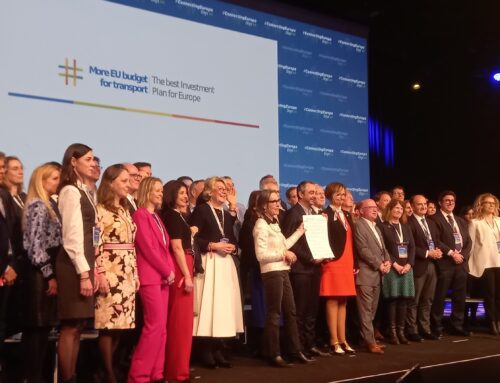How could a waste disposal network for Part A waste look like in the future?
How is the disposal fee developing?
What are the specific needs of the inland navigation system users?
These crucial questions – among several others – were recently discussed by IWT sector. On the 8th of April, CDNI Secretariat organised a Round Table Meeting on the future of Part A. CDNI Part A of the Implementing Regulation specifies rules for handling oily and greasy waste arising from operating the vessel. We have been reporting on the developments in this matter since last year (read more here and here).
The IWT Platform has also presented the interim results of an international survey on service level. The survey was prepared by our Environment & Safety Committee, and then shared online. According to the first results gathered, there is – in principle – a contentment among the stakeholders regarding both service and financing.
Below, we have summarised for you the discussion and subsequent results of the CDNI Round Table Meeting:
- Waste disposal network
- IWT sector wishes that the existing network is maintained. However, in case significant cost changes occur (such as sudden increases of a disposal fee), this assessment would have to be re-evaluated. At the same time, moderate adjustments in the network should always be considered, first of all, with regard to their cost efficiency.
- New innovative solutions and approaches should be developed in the future. Their benefits to the system and overall effects will have to be thoroughly investigated.
- Collection and evaluation of data should be improved in order to create a reliable basis for strategic decision making in the future. What is needed are data-backed statements and data-driven decision making.
- The existing network is to be examined with regard to its utilisation and efficiency.
- Financing
- Generally speaking, IWT sector is satisfied with the functioning of financing system.
- Nevertheless, more flexible models could be considered in a long-term perspective. For example, in a form of the base-rate for ships and variable payments, depending on their gas oil consumption.
- Basic rationale behind the CDNI – on which the indirect financing system was established – is that the more gas oil a ship consumes, the more waste it produces. IWT industry would like this assumption to be re-examined though to see whether its correctness can still be maintained in present time, together with a medium- and long-term outlook.
- Development of alternative energy sources should be a subject of intensive monitoring. This raises even more relevant questions, such as:
What kind of waste is generated by ships using alternative propulsion systems?
How fast will a number of such ‘clean‘ ships grow in a near future? - Recommendation to increase the cost transparency.
The Round Table Meeting was an important and valuable step in the discussion on the future of CDNI Part A. However, it was only a very first step in the right direction and work of the CDNI Committee is far from over yet. The Environment & Safety Committee of IWT Platform will continue to provide its opinions and proposals on how to tackle all the challenges.
Image source: CDNI animated film – watch HERE!
Elena Vostrikov






